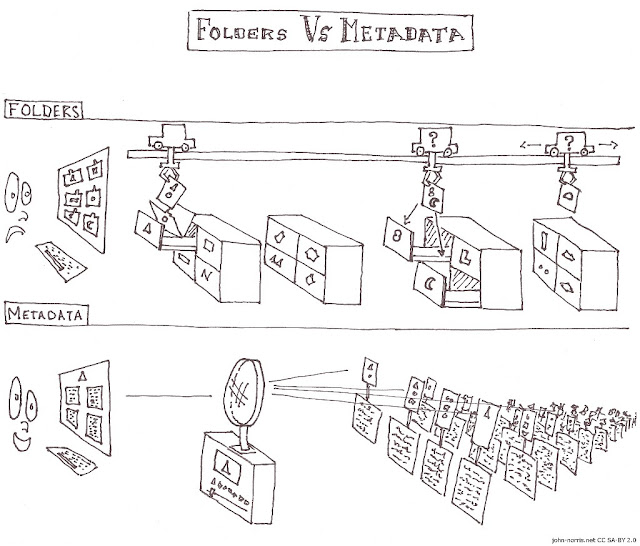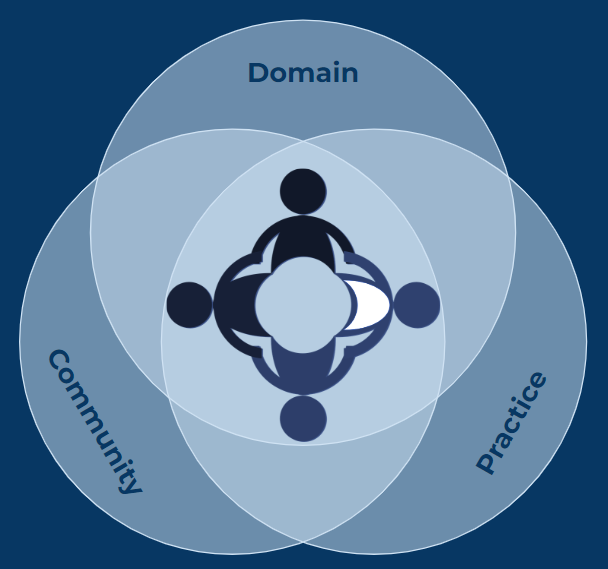Synchronous Learning
The word 'synchronous' has its routes in the Greek sunkhronos, where the sun- part relates to togetherness, and the -khronos part references time, so synchronous literally means occuring or existing at the same time.
In the world of education and training, synchronous learning plays a critical role in fostering real-time engagement, collaboration, and knowledge sharing. For professionals working in learning and education roles within the heritage sector — such as museum educators, archivists, historic site interpreters, and cultural heritage trainers — synchronous learning offers unique opportunities to enhance learning experiences while preserving and sharing our collective past.

|
| Synchronous-Asynchronous For Students by Rabin Pamela (Public Domain) |
What is Synchronous Learning?
Synchronous learning refers to any learning experience that happens in real time, with instructors and learners engaging simultaneously. This can take place in person, such as during live lectures, workshops, or guided tours, or in virtual spaces through video conferencing, webinars, and interactive live-streamed sessions. Unlike asynchronous learning, which allows learners to engage with materials at their own pace, synchronous learning fosters immediate interaction, discussion, and feedback.
The Value of Synchronous Learning in the Heritage Sector
For those involved in heritage education, synchronous learning offers several key benefits:
Allows immediate interaction and engagement
Live learning sessions allow educators to respond instantly to questions, tailor discussions based on participant interest, and clarify complex historical or cultural concepts in real time.
Facilitates experiential learning
Many heritage education programs rely on the power of place and experience. Synchronous learning enriches guided site visits, live demonstrations of historical crafts, and interactive storytelling sessions that bring history to life.
Encourages collaboration and discussion
Heritage professionals often work with diverse audiences, including school groups, researchers, and community members. Synchronous learning allows for dynamic exchanges of ideas, fostering deeper understanding and shared interpretation of historical narratives.
Digital technologies can be leveraged for accessibility
While in-person heritage education remains invaluable, digital tools such as Zoom, Microsoft Teams, or virtual learning environments enable synchronous learning for remote participants. This expands access to historical knowledge and allows a broader range of audiences to engage with heritage sites and experts in real time.
Implementing Effective Synchronous Learning Strategies
To maximize the impact of synchronous learning in the heritage sector, educators and facilitators could consider some or all of the following strategies:
Using interactive tools
Incorporating polls, quizzes, and real-time discussion boards during virtual sessions can keep learners engaged and encourage participation whether they are participating remotely or on-site.
Blending digital and physical learning
When possible, pair live virtual sessions with self-guided museum tours, archival research tasks, or other physical experiences to create a more immersive learning journey. This could on-site visitors using digital technologies to explore stories and objects in ways which are not possible physically; or it could include sending out physical loan boxes for virtual participants to interact with.
Train facilitators for online delivery
Effective synchronous learning requires skilled facilitators who can manage discussions, troubleshoot technology issues, and adapt content for different audiences: online and remote delivery requires a different (if intersecting) skillset to in-person delivery.
Record sessions for future reference
While synchronous learning is real-time, recording sessions allows learners to revisit key discussions, helping reinforce knowledge and reaching those who could not attend live. Also, recordings can be used to refine and improve activities, allowing the identification of strengths and weaknesses of activities and technology as well as facilitating the sharing of good practice. When recording any sessions, whether physical or digital, it is important to do so according to good safeguarding practice where children and young people are involved, and also to consider the feelings of any staffmembers involved in the planning, implementation and delivery of those activities.
Next Steps
Choose an existing on-site activity offered by your museum and consider the following:
- How might digital tools allow the development or expansion of synchronous learning activities for on-site participants? For example, if the session involves showing learners a particular object, might an interactive 3D scan of this object allow opportunities for more independent exploration by small groups?
- How might digital tools allow key outcomes of this session to be experienced by groups attending remotely? For example, if your session involves a group discussion, could a similar result be achieved using breakout rooms in Zoom?
- Which of your ideas resulting from parts 1 & 2 could potentially be achieved with the technology already available to your team? Which would require future investment (in, for example, technology or training)?
Conclusion
Synchronous learning is an invaluable tool for heritage professionals seeking to engage diverse audiences, share knowledge, and bring history to life in meaningful ways. Whether through live workshops, interactive virtual tours, or collaborative discussions, real-time learning experiences enrich heritage education and ensure that cultural narratives continue to be explored and understood by future generations. By embracing synchronous learning methods, heritage educators can bridge the past and present, creating impactful and accessible learning experiences for all.









.png)
Comments
Post a Comment